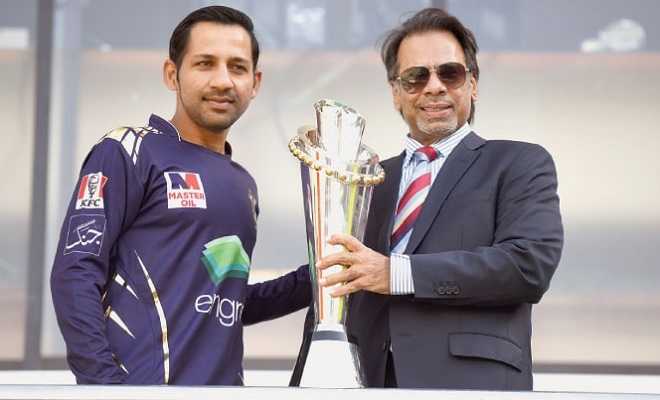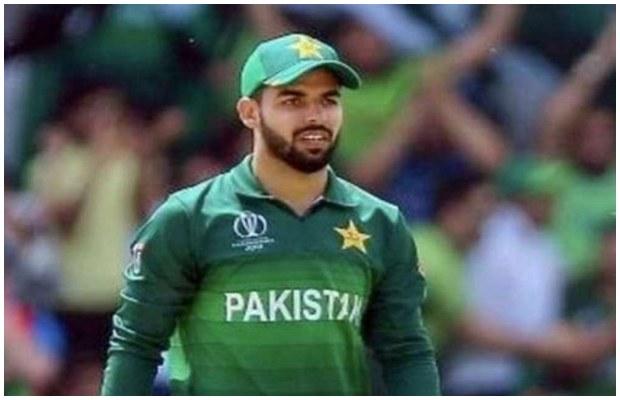Sarfaraz Trolls Don’t Understand T20 Cricket

And it took one tactical change from Sarfaraz for the trolls to come out of their rabbit holes.
“Darpok’, ‘open kyun nahe krta, ‘not leading from the front, ‘jigra nahe hai’, ‘aggressive nahe hai‘; the usual Shoaib Akhtar school of cricket commentary ensued.
Colour me surprised, will you?
All thanks to the poor standard of cricket punditry at an international level, T20 Cricket is viewed as simply another shortening of cricket.
Well, it isn’t just that.
Cricket was designed to be played with eleven batsmen. There was no limitation of time or balls for these 11 batsmen. Then came 50 over cricket. In a high percentage of matches, especially batting 1st, we see batting resources are wasted i.e. not all batsmen get a hit in the middle. The last proper innovation is the T20 (Ima ignore T10 and the 100 for now).
Do we really need 11 batsmen to play 20 over cricket? The problem is, T20 is viewed as a shorter form the 50-over game. T20 cricket by all measures is played very differently.
Many argue that it is an entirely different sport.
In 50 over cricket, there is a top 5 or 6 and may be one floater batsman at most. Whereas in T20s, there are at most two fixed roles, and 3 to 4 floaters. There is no “batting order” in T20s. As Multan Sultans have shown quite well so far. There are match situations, combinations and head to heads that you need to tackle.
Each batsman has recognizable strengths n weaknesses. Some build an innings better, some demolish specific type of bowlers and struggle against other kinds, and some prefer playing on a certain type of wickets. Scientific data-driven methods identify these factors. Based on that analysis, there is a defined role of every batsman. There are no batsmen in the world, who are complete in every sense. Not Virat Kohli, not Babar Azam, not Chris Gayle…no one.
Each has their strong points and weaknesses.
The strength of Sarfaraz is to play low-risk cricket post power play. With Sohail Khan batting at 8 i.e. long-tail Quetta need to play low-risk cricket for a period in the middle, unlike Islamabad who bat till number 10. Sarfaraz’s role is to attack spinners and score at 8 to 9 runs per over. You have hitters around him and they take the risks. That has worked wonderfully well so far in the tournament and Quetta have beaten teams which are clearly superior on paper.
The match against Multan was an exception. Rile Rossouw played an absolute blinder. As captain Shan Masood said in the post-match interview, Multan were looking to score around 140 to 160. It was never a 200 wicket. As the match progressed the pitch got slower and the ball spun. Khushdil Shah bowled for the 1st time in the HBLPSL and gave away 1 run and picked up a wicket. Doesn’t that tell you something?
When Quetta started the innings, they needed 9.78 runs per over. Jason Roy, whose role is to attack, scored 30 runs of 27 balls? In essence, this meant that when the team needed close to 10 runs per over, he scored at just over 6. When the 1st wicket fell, the team needed close to 11 runs per over. Ahsan Ali came in next, he scored 11 of 14 balls. When the team needed 11 runs per over, he scored at under 6 runs per over. Shane Watson was compensating for their slowness to some degree but it wasn’t enough.
With two wickets down, Quetta needed close to 12.50 runs per over. That is more than 2 runs a ball for 8 overs. on a wicket not favourable for batting. A gigantic task.
It is in part failure of the top 3 to keep with the required run rate partly due to the nature of the pitch. The chase began with an NRR of 9. With the supposed attackers in the middle, it jumped it to 12s. Had they kept it at 9s, it would have been ideal for Sarfaraz to come in do his usual job. Take the score to a point where the team requires 50 or 60 in 5 overs or so and hand it over to Ben Cutting to finish it off. That is the formula Quetta Gladiators have adopted in chases.
Now, when Quetta are two down needing 12 runs per over, does Sarfaraz come in next simply because this is his number? Does the situation require a Sarfaraz or someone who can strike it at 12 runs per over i.e. strike rate closer to 200? Sarfaraz is not the batsman to score at 12s. It’s stupid to expect him to do so as it is stupid to expect Jason Roy to build an innings against spinners in the middle overs.
Both distinct, different and specialised roles.
The situation required six hitters and that was a gamble Quetta had to take. The right decision was taken to slide Sarfaraz down the order to accommodate batsmen more suited to the role. They failed, partly because this wasn’t a 200 run wicket. It also showed the critical role Sarfaraz has been playing so far in bringing the Quetta close to target and then leaving for the finishers to do their job. Ben Cutting is likely to score a 40 of 20, but when you ask him to score 70 of 35, he struggles. It is a matter of capacity and role. In other words, Sarfaraz took the innings deep and Cutting and co finish it off.
Quetta Gladiators have a defined role for Sarfaraz. You take it to the 14th or 15th over at 8s and 9s. Then a shift has to be made. Eight to nine runs per over is not good enough. At that point, Sarfaraz’s wicket doesn’t matter. That is his time to chance his arm. If it doesn’t work, Ben Cutting, Mohammad Nawaz, and Anwar Ali are more likely to score at 12 than Sarfaraz is.
There is no point of Sarfaraz scoring a 50 of 38 balls and raising his bat in celebration. It might be another 50 on the record book but would damage the team’s cause. Rather the management would have Sarfaraz, score a 40 of 28 and then Ben Cutting can come in and score at a strike rate of 200 and take the team score further. For each phase of the innings, Quetta have specific batsmen assigned with particular roles.
So when the causal fan is shouting when Sarfaraz drops down the batting order, it is because the management decides that they have better batsmen to play a particular role. Another popular complaint is Sarfaraz used to open and now he doesn’t. Quetta are paying hundreds of thousands of dollar to Shane Watson and Jason Roy to play that part. A part they specialise in. They don’t however, have a middle-order batsman who can play low-risk cricket. Essential for a team which has a long tail. Hence, Sarfaraz performs that role.
Quetta’s team management understands that. Sarfaraz as a figure of authority understands and accepts that even when it means his own place in the side comes under scrutiny. Each player has a defined role and each player has to sacrifice for the betterment of the team when needed. In doing so Sarfaraz “leads from the front” and “sets an example”.
Sustained success with often an inferior team under Sarfaraz is not a fluke as much as ‘some’ would like you to believe. When a leader is willing to sacrifice his own numbers for mutual good, the team usually follows. As they say, leadership isn’t about making great speeches and wearing printed t-shirts, it is at times about empowering others.






